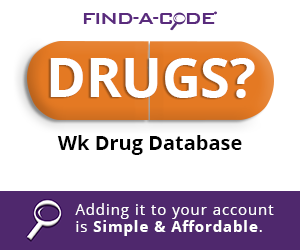
Are you Treating & Billing Medical Patients Tooth Infections
July 16th, 2019 - Christine TaxinA tooth infection, or an abscessed tooth, generally occurs as a result of tooth decay and poor oral hygiene. However, it can also develop due to previous dental work or traumatic injury. When an infection occurs, it causes a pocket of pus to form in the mouth as a result of an overgrowth of bacteria. This infection often causes swelling, pain, and sensitivity in the area. Without treatment, the infection may spread to other areas of the jaw or even the brain.
Dental decay and cavities are very common. As one article notes, up to 91% of adults ages 20–64 have cavities. Also, around 27% of people in the same age group have untreated tooth decay. Treating tooth decay early is important to prevent complications such as tooth infections.
Anyone who experiences a tooth infection should see a dentist right away to prevent the infection from spreading.
One of the first things a dentist will likely recommend is an antibiotic to kill the infection. Some antibiotics work better than others for tooth infections, and there may also be some over-the-counter (OTC) pain medications to help with the symptoms.
When to use antibiotics for a tooth infection
Dentists will only recommend antibiotics for tooth infections if absolutely necessary.
Dentists will typically only recommend antibiotics in dentistry for tooth infections. However, not all infected teeth require antibiotics. In some cases, a dentist may simply be able to drain the infected area, remove the infected tooth, or perform a root canal to fix the issue. They tend to avoid recommending antibiotics unless they are absolutely necessary, such as when the infection is severe or spreading, or if a person has a weakened immune system.
How long do they take to work?
A person should complete the full round of antibiotics. How long each antibiotic takes to work varies depending on many factors, such as the severity of the infection and how effectively the drug eliminates the infectious bacteria. It is important for people to complete a full round of antibiotics, taking all of the prescribed medication exactly how the dentist says to take it. Although a person may begin to notice their symptoms go away after a couple of doses, completing the full round of antibiotics helps prevent the infection from coming back or getting stronger.
As the International Dental Journal study notes, the majority of acute infections resolve in 3–7 days.
Side effects
Although antibiotics can help clear up
Other tooth infection treatments
Antibiotics may help clear the active infection, but the tooth will need work to keep the infection at bay. This typically means undergoing one or more procedures in the area, such as:
• draining the abscess
• filling in any cavities
• performing a root canal
• extracting the tooth
Antibiotic treatment for a tooth infection is just one part of the solution. In reality, most tooth infections require work on the actual tooth itself to clear up completely. If you are not going through the tooth and performing a draining of the abscess or extracting
Summary
Although antibiotics may help clear up a tooth infection, they are only one part of the solution. Most tooth infections require a dental procedure, such as a root canal or tooth extraction, to completely clear up. Prompt treatment is important to keep the infection from spreading. Some helpful home remedies may help keep swelling down or ease
###
Questions, comments?
If you have questions or comments about this article please contact us. Comments that provide additional related information may be added here by our Editors.
Latest articles: (any category)
Artificial Intelligence in Healthcare - A Medical Coder's PerspectiveDecember 26th, 2023 - Aimee Wilcox
December 22nd, 2023 - Find-A-Code
December 19th, 2023 - Aimee Wilcox
December 12th, 2023 - Aimee Wilcox
November 14th, 2023 - Aimee Wilcox
October 26th, 2023 - Wyn Staheli
October 11th, 2023 - Wyn Staheli
